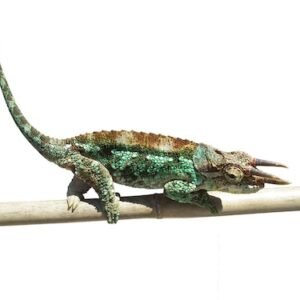veiled chameleon care
Habitat Setup
veiled chameleon care ,Creating a suitable habitat for veiled chameleons is foundational to their health and well-being. The enclosure must mimic their natural environment, providing adequate space, temperature, and humidity levels. A well-ventilated glass terrarium is recommended, typically with a minimum size of 24x24x48 inches for adult veiled chameleons. This vertical space is essential as chameleons are arboreal creatures, naturally climbing to various heights in their habitat.
Temperature regulation is key in a chameleon’s enclosure. The basking area should reach around 95-100°F (35-38°C), providing a warm spot for the chameleon to absorb heat. The cooler side of the enclosure should maintain a temperature between 75-80°F (24-27°C), allowing for thermoregulation. Additionally, maintaining humidity levels between 40-60% is crucial; this can be achieved through regular misting and the use of a quality hygrometer to monitor moisture in the air.
Lighting also plays a critical role in habitat setup. A UVB light source is essential for a veiled chameleon’s health, facilitating calcium absorption and preventing metabolic bone disease. It is advisable to use a bulb specifically designed for reptiles, placing it within 12-14 inches from the basking area. Basking lamps further enhance the thermal gradient, and selecting the correct wattage based on enclosure size is important.
To enhance the habitat’s quality, include plenty of vertical branches and foliage where the chameleon can climb and hide. Indoor plants, such as pothos or hibiscus, can bring life to the enclosure while providing natural hiding spots. When it comes to substrate, options like coconut fiber or reptile carpet offer ease of maintenance while avoiding risks associated with loose substrates. Regular cleaning and maintenance of the habitat ensure a sanitary environment, critical for the chameleon’s overall health.
Diet and Feeding
veiled chameleon care ,Veiled chameleons, known for their vibrant colors and captivating eyes, have specific dietary requirements crucial for maintaining their health and well-being. A balanced diet predominantly consists of live insects, such as crickets, mealworms, and roaches. These insects are rich in protein and essential fatty acids that are vital for the growth and energy needs of these reptiles. However, it is important to ensure that the insects fed to your chameleon are gut-loaded, meaning they have been fed a nutritious diet themselves prior to being offered as food. This practice enhances the nutritional value of the insects, allowing your chameleon to receive more vitamins and minerals.
In addition to live insects, veiled chameleons can benefit from the occasional offering of fruits and vegetables. Items such as leafy greens, squash, and berries are excellent choices, contributing necessary vitamins and hydration. Nonetheless, it is important to note that fruits should only be given in moderation due to their higher sugar content. Achieving a diverse diet not only helps in reducing the risk of nutritional deficiencies but also encourages natural foraging behavior, simulating their instincts to hunt and explore.
Establishing a feeding schedule is advantageous for your chameleon’s routine. Juveniles may require feeding every day, while adults can be fed every other day. Portion sizes should align with your chameleon’s age and size; typically, offering as many insects as they can consume in a few minutes is recommended. Regularly monitoring your chameleon’s weight is essential to ensure they are receiving adequate nutrition without overfeeding. In summary, by providing a varied and balanced diet consisting of live insects and appropriate plant matter while keeping an eye on portion sizes, owners can significantly enhance the health and vitality of their veiled chameleons.
Showing the single result
-
Chameleons for Sale
Veiled Chameleon
Original price was: $59.00.$49.00Current price is: $49.00. Add to basket

